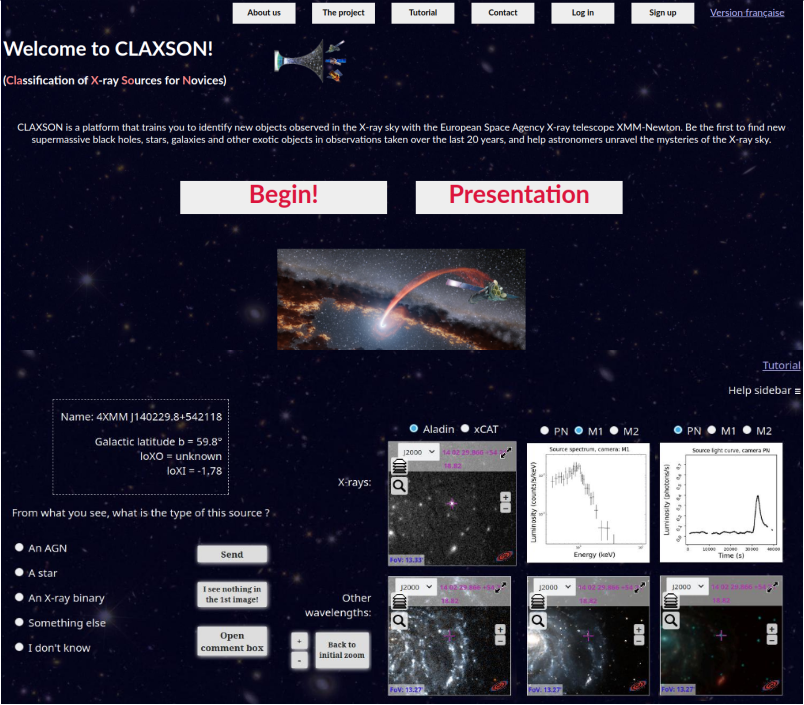21 Years of XMM-Newton celebrated with a new catalogue and an ambitious citizen science project
On the 21st anniversary of the launch of the European Space Agency’s X-ray observatory, XMM-Newton, the XMM-Newton Survey Science Centre (XMM-SSC) are releasing a new catalogue, 4XMM-DR10, of all of the 849991 X-ray detections found in 11647 observations taken with the satellite. Using the 7803 overlapping observationsalong with sophisticated stacking techniques yet fainter objects have been detected. These 335812 sources are listed in 4XMM-DR10s.
Most of the detections are serendipitous detections and their nature is unknown. To try to identify the supermassive black holes that are actively swallowing large quantities of matter, known as Active Galactic Nuclei, from the stars or from other binary systems, we have devised a website that allows the general public to help astronomers in their quest to understand the contents of the catalogue.
“Citizen science is a new way to do science and it is in full boom“, says Hugo Tranin of the Research Institute into Astrophysics and Planetary Science (IRAP), Toulouse, France, who is the main developer of the website, CLAXSON.
CLAXSON (Classification of X-ray Sources for Novices) carefully takes you through all of the steps that you need to understand before accompanying you in learning how to identify the various objects contained in the catalogue. Once proficient, you can find your own new black holes ripping apart stars or stars flaring millions of times brighter than the solar flares seen from our Sun. Citizen science is based on the wisdom of crowds: if you have to guess the weight of a cow by just seeing it, you will probably give a bad estimate. But, if you average the estimates of a whole crowd, you will get a result very close to reality!

“Thanks to the identifications that will be made by the public using CLAXSON, we will be able to construct a large reference sample, necessary for advanced machine learning techniques which allow a computer to identify the other sources within the catalogue” says Natalie Webb (IRAP), the director of the XMM-SSC.
As XMM-Newton continues to survey the X-ray sky, finding more and more exotic objects, we will be able to automatically classify them thanks to the help from the public, providing a wealth of information to scientists and the public alike.
The XMM-SSC is a consortium of the following institutions:
- Institut de Recherche en Astrophysique et Planétologie, Toulouse, France
- Observatoire Astronomique de Strasbourg, France
- Département d’Astrophysique, CEA/DRF/IRFU, Saclay, France
- Leibniz-Institut für Astrophysik Potsdam (AIP), Germany
- Max-Planck Institut für extraterrestrische Physik, Garching, Germany
- University of Leicester, United Kingdom
- Mullard Space Science Laboratory, University College London, United Kingdom
- Instituto de Fisica de Cantabria, Santander, Spain
Further Resources:
- The XMM-Newton Survey Science Centre webpages and catalogue access: http://xmmssc.irap.omp.eu/
- CLAXSON : http://xmm-ssc.irap.omp.eu/claxson/index.php
IRAP Contacts:
- Dr Natalie Webb, XMM-Newton Survey Science Centre director, Institut de Recherche en Astrophysique et Planétologie, Toulouse, France, Email: Natalie.Webb@irap.omp.eu
- Mr Hugo Tranin, Institut de Recherche en Astrophysique et Planétologie, Toulouse, France, Email: Hugo.Tranin@irap.omp.eu






